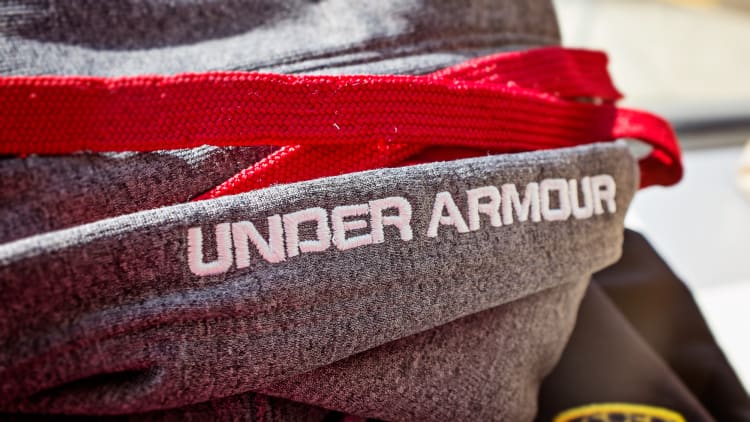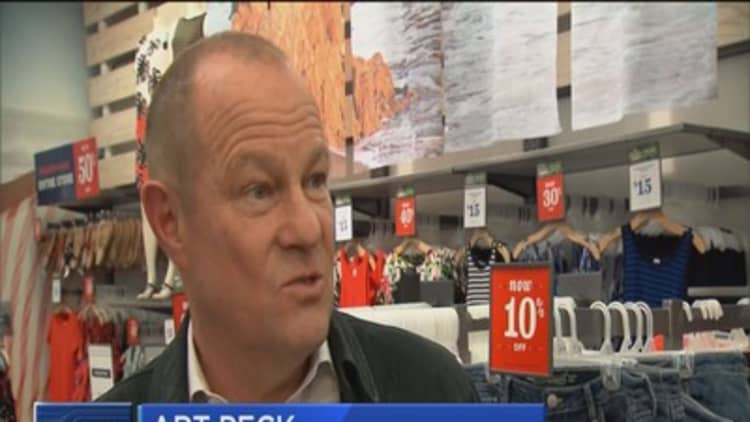As being fit becomes the latest trend, more women are searching for ways to show that they work out both in and outside of the gym.
It's something Reebok has kept in mind as it transforms itself as a fitness training brand. The Adidas subsidiary put its name behind mixed martial arts company UFC earlier this year, and has been supporting the CrossFit community for several years. It's one of a number of brands that is learning that to appeal to women, they need to step up both the function and fashion of their products.
"Athleisure is one of the big stories," said Reebok's head of design and apparel excellence, Corinna Werkle. "Performance gear becomes part of your day to day. Even if somebody is not a high-performing athlete, the look fits into their casual wardrobe."
According to digital agency Deep Focus' Cassandra Report on health and wellness—which surveyed more than 1,700 representative Americans—more than one-third of millennials admit to cutting back so they could spend more on health-related purchases. In particular, 46 percent of women between the ages of 19 to 34 said they have become more interested in athleisure wear in recent years.
"Athleisure is not only something brands have started to focus on to speak to millennials but to Gen Z as well," said Melanie Shreffler, senior editorial director for Cassandra at Deep Focus. "They're creating clothing that is not only functional for going to the gym but also streetwear."

The renewed attention on functional athletic wear is what inspired New York University medical student Frank Yao and Olympic silver medalist in sabre fencing Keeth Smart to start RXACTIVE. The apparel company makes clothing out of stretchable counter mesh, which is similar to resistance band material. Theoretically, the outfits help the wearer activate certain muscle groups to help them achieve a better workout.
Smart said it is getting high demand from professional athletes, but is also finding nonprofessional customers are intrigued. It launched its Indiegogo campaign Aug. 11.
"The average consumer has become more interested in athletic wear, and they have become more aware of what functionality they want from their clothing and the types of features they offer," said Yao.
Even traditional athletic brands are aware of this heightened passion from the public for professional-level apparel. For example, Nike gets feedback during a roundtable with its athletes and design team on how the item fits, breathes and functions. The items are also tested for environmental and biomechanical standards through the company's sports research laboratory. For example, Nike's popular Flyknit sneaker took more than 10 years to develop.
While this process results in customized clothing for its sponsored athletes, Julie Igarashi, Nike women's training vice president of global design, said it's also designing for the nonprofessional athlete who is increasingly interested in wearing what their idols are wearing.
"Our mission is to serve athletes," said Igarashi. "You may not train for the Olympics, but you don't take your fitness or lifestyle less importantly than someone like (Olympic track and field star) Allyson Felix."

Reebok goes through a similar process. When it comes to the athlete versions, sponsored athletes come into the Reebok offices to talk about their concerns and requests. The company also does body scans to make sure the silhouette fits the muscle composition of athletes in that sport.
The brand has two main lines: one that is specifically designed for the high-performance athletes and a stripped down, cheaper version. Both are available for purchase.
"We want to make sure that [the] consumer is able to get that specific bra or the fight kits that the athlete wears," Werkle said. "Then, we take the learnings from there and create a normal, basic version you can have—a take-down version for the rest of the range."
Werkle said Reebok is seeing increasing sales across the board, as more women take training more seriously. It's bra business for example, has doubled in the last five years.
But, when it comes to women's lines, there's still a huge emphasis on what it looks like. About half of Cassandra Report survey takers said they didn't mind spending money on athletic apparel because it could be worn more places than the gym. Six out of 10 said they were more likely to work out if they looked good.
Even UFC star Ronda Rousey made a specific query to the Reebok team to pay attention to fashion. They created top with mesh paneling for her.
"She told us 'Even if I leave my gym, I want it to look flattering,'" Reebok's Werkle said.
Yao admits RXACTIVE had to make its women's line a lot "sleeker" than the men's, therefore removing some of the functionality. Female test subjects complained they didn't like how bulky the pants looked. It also had to tone down the size of its logo and add in more colors as a response to the negative feedback.
"That's the direction we got pulled in, whereas the men were less vocal," he said.
Nike's Igarashi said its team is constantly looking at apparel trends to make sure the clothing looks as good as it's meant to perform. She cited boxer Marlen Esparza's instructions to her team.
"She told us, 'If I look good, I feel good, and when I feel good, I fight good,'" Igarashi said.




